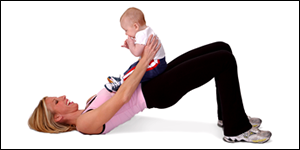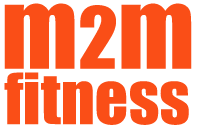How soon after giving birth can I start exercising?
When you feel up to it, take your baby out for walks in his pushchair. Getting out and about will help to lift your mood and exercise your body gently. As your strength returns, you can expand your walking routine by speeding up and taking longer walks.
It’s best to avoid swimming for the first six weeks to make sure you don’t pick up an infection.
When should I delay exercising?
With all the distractions of a new baby it can be hard to remember to do pelvic floor exercises. Read our tips on how to fit your exercises into your day. If you’re still finding you leak six weeks after your baby’s birth, ask your GP to refer you to physiotherapist or a continence nurse.
What’s the best way to lose weight?
A good goal is to lose between half a kilo and a kilo (a pound or two) a week. Losing weight slowly makes it more likely that the weight stays off.
If you weren’t active during your pregnancy, start with a 15-minute routine, say, a brisk walk that works your arms and legs, and gradually increase to 30 minutes.
If you tapered off your fitness routine towards the end of pregnancy, begin at the level you stopped exercising at when you were pregnant. You can always increase the intensity or time as you feel ready. If you develop any aches or pains, ask your GP for advice.
Another option is to find a suitable exercise class. Buggy fitness classes are perfect as the exercises will be suited to post natal women and you will not have to worry about finding a babysitter. This can also be useful if you are still breastfeeding or have feelings of anxiety about being separated from you baby. Another benefit will be meeting other new parents in your local area.
If you can, exercise three to five days a week. Whatever your chosen form of exercise, whether it’s walking, swimming, or attending a class, work out for at least 30 minutes at a time.
To get the most of out your workout, exercise so that you feel a little out of breath but can still hold a conversation.
How can I tell if I am doing too much too soon?
My tummy feels very slack. What can I do?
To find out if you have diastasis rectus abdominus, and not just normal pregnancy stretching, your midwife should give you a ‘rec check’. Or you can do it yourself:
- Lie on your back with your knees bent.
- Place your hand flat on your tummy just above your belly button, with your fingers pointing directly down towards your pubic bone.
- Breathe in and as you breathe out, gently lift your head and shoulders off the floor as though attempting a sit-up.
- Feel for your tummy muscles coming together under your fingers as you try to sit up.
Try to count how many fingers span the gap between the muscles that meet over your tummy. You may need to try a few times before you feel anything. If you can’t feel anything after three attempts, ask your midwife to check. A fully qualified pre and post natal exercise Personal Trainer should also be able to perform the ‘rec check’ for you.
A gap between the muscles of two finger widths or less is considered normal after having a baby. If your gap is three finger widths or more, or you notice your tummy making a dome shape as you try to sit up, you have over-stretched muscles.
Pelvic floor exercises and gentle lower tummy muscle exercises should tighten your muscles. Don’t try to do sit-ups.
If the gap remains three finger widths or more after a couple of weeks, ask your GP to refer you to a physiotherapist. A physiotherapist can give you specific exercises to help you.
Leaving diastasis rectus abdominus untreated may increase your chances of developing back pain and will make it harder for you to regain a flat tummy.



Comments are closed.